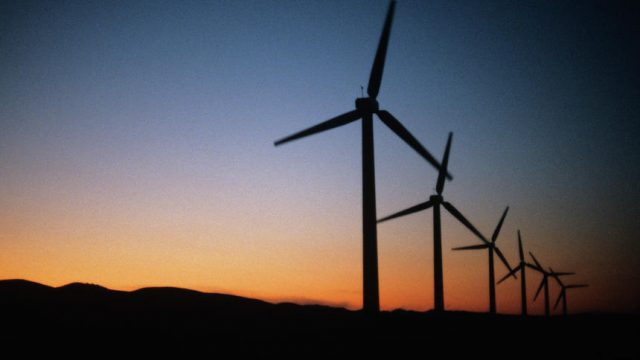The Jobs Argument for Wind Power Is Baloney

Wind turbines generating electricity
In a recent editorial the Grand Forks Herald tries to gloss over the very real problems with wind power.
Namely that it largely wouldn’t exist without taxpayers picking up pretty much all of the costs of production, and that it’s an intermittent power source which (barring some future technological invention or innovation) will always have to be paired with base load power sources.
The gloss the Herald chose for these problems was the jobs argument:
The tax credits distort the market. The turbines kill too many bats and birds. Some people don’t like the look of the turbines. And on and on.
But here’s the thing. The question isn’t whether the policies create trade-offs.
The question is whether the trade-offs are worth it.
The pay off to the trade off, as the Herald describes it, are the jobs created in the wind industry.
I don’t even like the premise of this argument, which supposes that market realities of power generation should take a back seat to job creation. By that logic, I guess we should abolish modern farm machinery. After all, back when we plowed the fields with horses agriculture was much more labor intensive and provided more jobs.
But stipulating to the efficacy of the argument for a moment, if we’re going to talk about jobs and trade offs, what must enter the conversation is the number of jobs produced by the coal industry in North Dakota, which surpasses those created by wind power generation by several orders of magnitude.
According to a report from researchers at North Dakota State University (read it below) the lignite energy industry in our state employs nearly 4,000 people directly and roughly 11,500 indirectly.
If you want to justify wind energy’s politically-driven rise in the energy markets by touting jobs, you must also be ready to defend the threat to jobs related to rival power generation.
The Herald, rather conveniently, left that part out.
Though, again, I don’t like the logic of this debate. If wind energy (or natural gas or nuclear power or whatever) drives coal out of the market place because they’re better alternatives then so be it. The jobs issue is irrelevant.
I don’t think anyone is crying over lost jobs in the horse-and-buggy industry due to the advent of the automobile. I’m not interested in propping up industries because they have good lobbyists, whether we’re talking about wind or coal or anything else.
But wind energy is only competitive with coal in so far as the taxpayers pick up pretty much all of the industry’s costs. There have been a lot of headlines about how wind energy is now competitive coal, but here’s the inconvenient truth behind those reports (emphasis mine): “Total U.S. wind energy capacity grew 19 percent in 2016 and reached 5.5 percent of total generating capacity, outstripping hydroelectric as the nation’s largest source of renewable energy. Much of the surge in added capacity came from power companies and utilities eager to take advantage of the PTC before it is cut from 80 percent to 60 percent.”
Wind power producers can undercut coal when selling to the power grid because they can sell their power for, at times, literally nothing.
Thanks to heavy subsidies from the taxpayers.
This reality will prompt the wind energy propagandists to start yammering about subsidies for coal, but in 2014 subsidies for wind added up to about $23 per megawatt hour, a figure about 50 times greater than subsidies for coal.
Is that really the sort of thing we want to make our power grid dependent on?
[scribd id=344403352 key=key-kAyhM7oS6yFYESSaYQbM mode=scroll]





